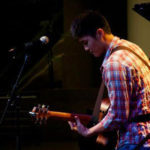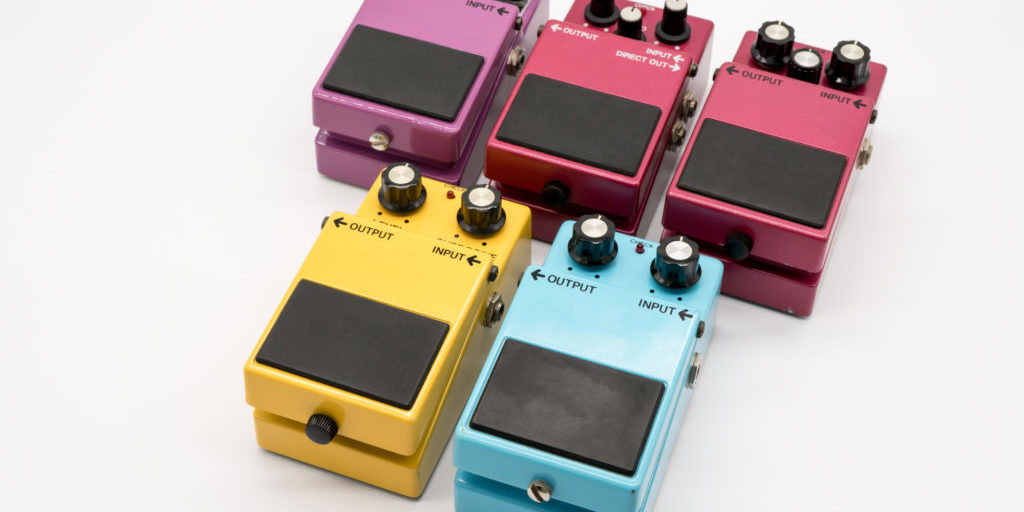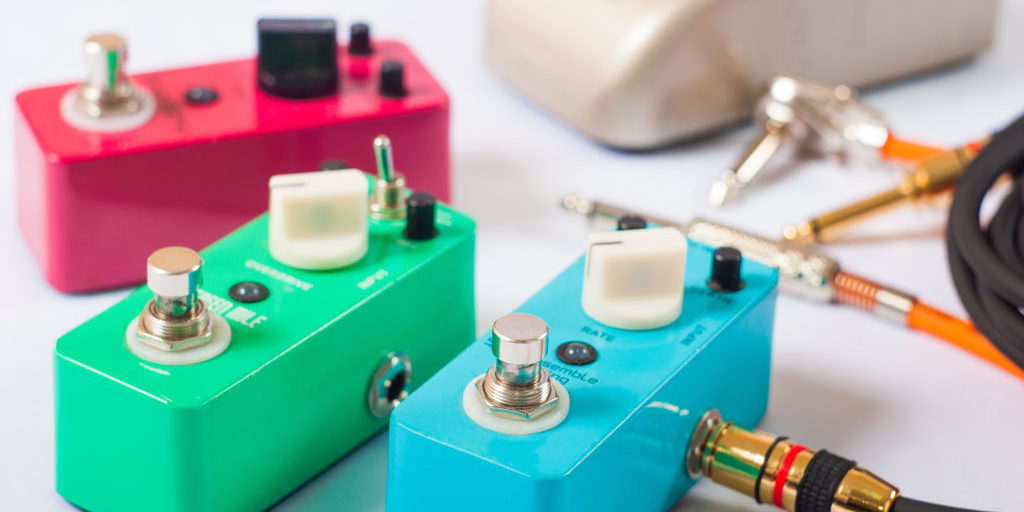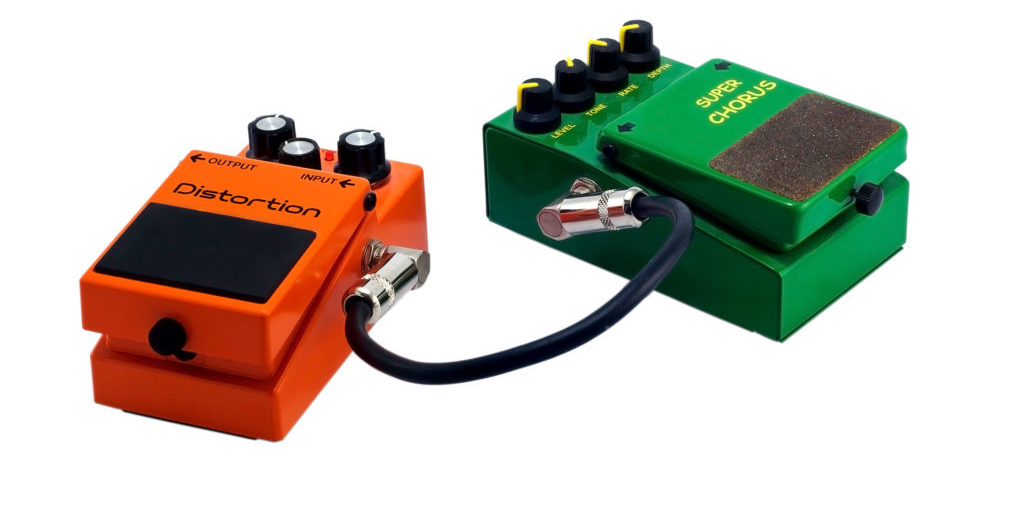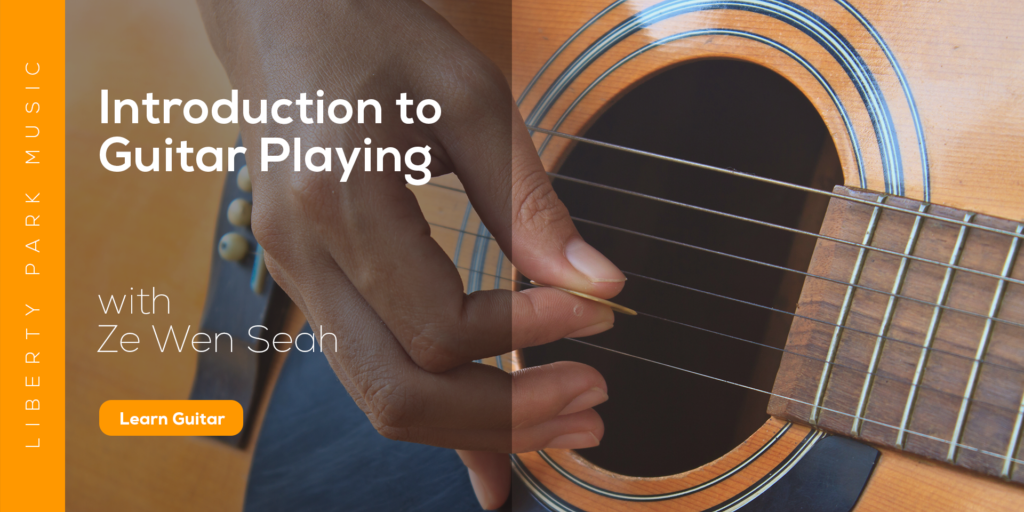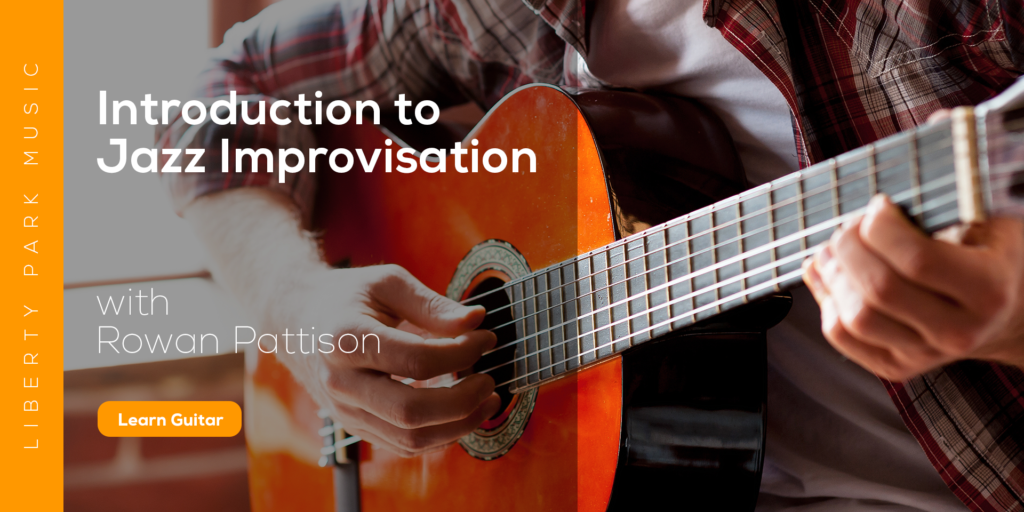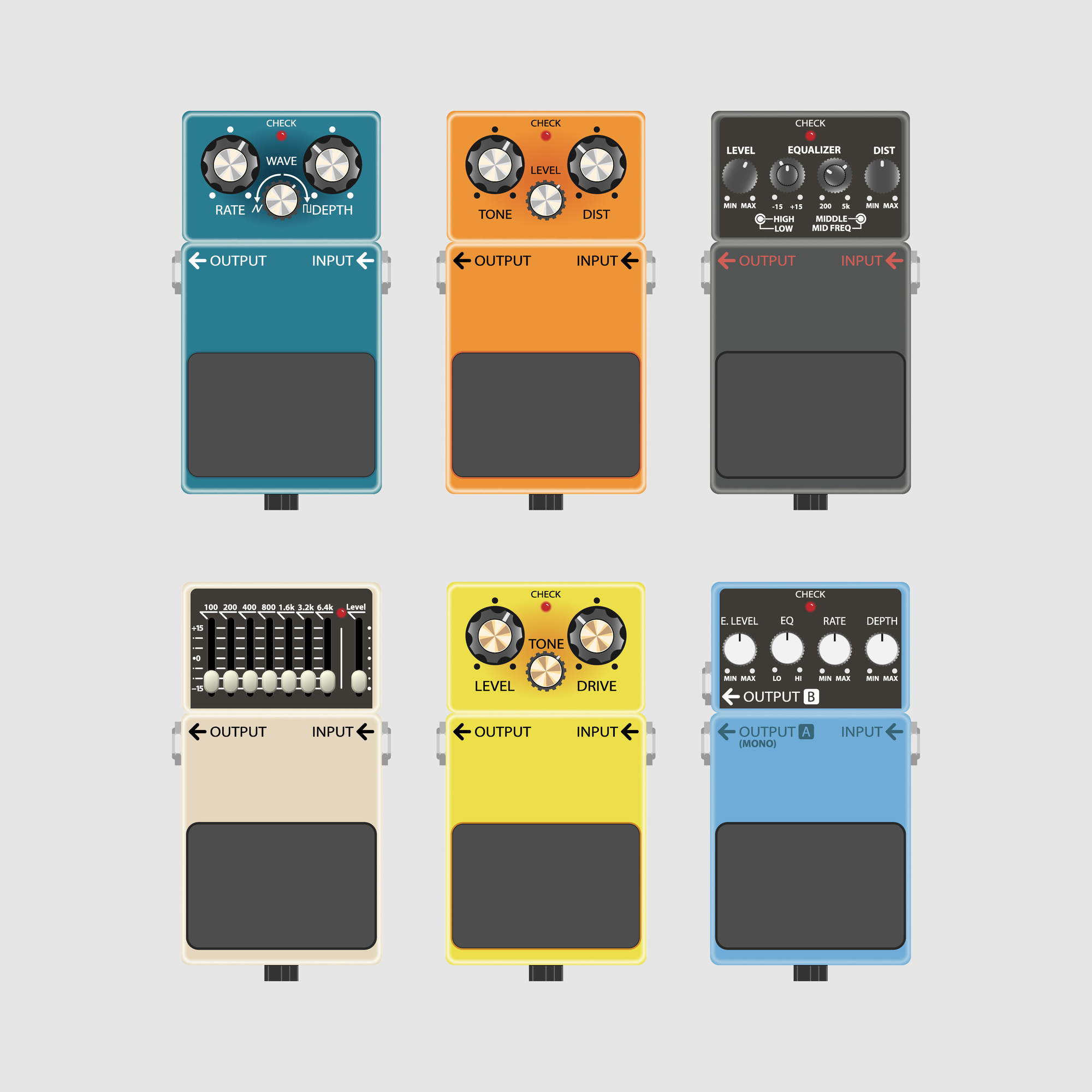
Phaser pedals allow you to get really unique sounds out of your guitar. If you’ve ever wondered how Van Halen got that slow, sweeping sound in his epic guitar solo in “Eruption,” or if you are chasing that psychedelic vibe from Hendrix’s “Little Wing,” look no further than a decent phaser pedal! A phaser is often used to achieve a Wah sound, or a sound that is similar to a Leslie rotating speaker, but make no mistake, this effect can be used in a multitude of manners (as demonstrated by Jimi Hendrix). Phasers are also often used on other instruments besides the guitar!
On the surface, most phaser pedals are very simple to use. Many of them even come with only a single adjustable knob! However, the mechanics of how the effect works is a bit more complicated, so let’s first take a little time to explore how a phaser works.
What is a “Phaser” effect?
A phaser is an audio processor that splits an incoming audio signal from your guitar into two paths. One of the paths is kept in its original state, while another is processed by filters called all-pass filters. These filters preserve the amplitude of the signal, but alter the phase at specific frequencies. What this means is peaks and troughs will be placed in the altered audio signal.
There can be several all-pass filters within a single phaser pedal, and each filter is considered a “stage.” The more stages in a pedal, the more dramatic the sound of the effect. When the original signal is finally mixed back with the affected signal, the result are notches in the sound wave caused by phase cancellation. This happens because the affected signal will definitely have frequencies that are out-of-phase with the original signal. To make the effect even more dramatic, the frequency points that the phaser affects--sweep up and down the frequency spectrum--resulting in a whooshing or sweeping sound.
That might have been a little too technical of an explanation, so if I had to explain how a phaser works in a quick and simple manner, it’d sound something like: “A phaser splits an incoming signal into two and phase shifts (flips the audio wave 180° to cancel out the original signal) specific frequencies of one of the signals. When the two signals are combined back together, certain frequencies will be out-of-phase, resulting in certain frequencies sounding thin and hollow.”
Phaser pedals
Phasers are a very popular effect for guitarists, and they really started gaining traction during the late 1960s when psychedelic rock was beginning to take a foothold on the cultural consciousness of Americans. The effect was first popularized by guitarists like Jimi Hendrix, Brian May, and Eddie Van Halen. By the ‘70s, phasers were gaining traction amongst other instrumentalists like Bill Evans and Billy Joel. The popularity of this effect will also explain why there are a ton of phaser pedals on the market. In order to help you make an informed purchasing decision, here is a short list of some of the most popular phaser pedals currently on the market.
1. MXR Phase 90

Brand New: $79.99
Used: $40 - $55
If you’ve spent at least five minutes researching phaser pedals on the internet, then you’ve undoubtedly run across the MXR Phase 90. There isn’t a more iconic phaser pedal currently on the market and a lot of its popularity probably has to do with how simple it is to use this pedal. The pedal has a single footswitch that activates and deactivates the effect, while a single knob, labeled Speed, controls the the speed at which the sweeping effect of the phaser occurs. And that’s pretty much it for this pedal!
This pedal uses a 9v adapter or a 9v battery to power the device. The sound produced by the pedal can be described as being warm and rich thanks to its analog components. While there are many adjustable parameters, many guitarists find that its single adjustable knob is more than enough for their purposes. This pedal also works very well with distortion and overdrive effects, which is a huge plus as those are the effects most often paired with phasers. You can also expect a slight mid-range bump that will force your guitar to stick out more during a solo.
Three different versions of this pedal exist on the market: the Script, Block, and EVH. The Script version provides a sound that’s closer to the vintage models of phaser pedals, while the Block version provides a modern phaser sound. The EVH model, which is an Eddie Van Halen signature model, provides you with the option of both the Script and Block sounds. However, since the EVH is essentially two phaser pedals in one, it’s going to come at a higher price point of $129.99 brand new.
Notable artists that have used this pedal include David GIlmour, Jimmy Page, and (of course) Eddie Van Halen.
Buy here
2. Electro-Harmonix Small Stone Nano
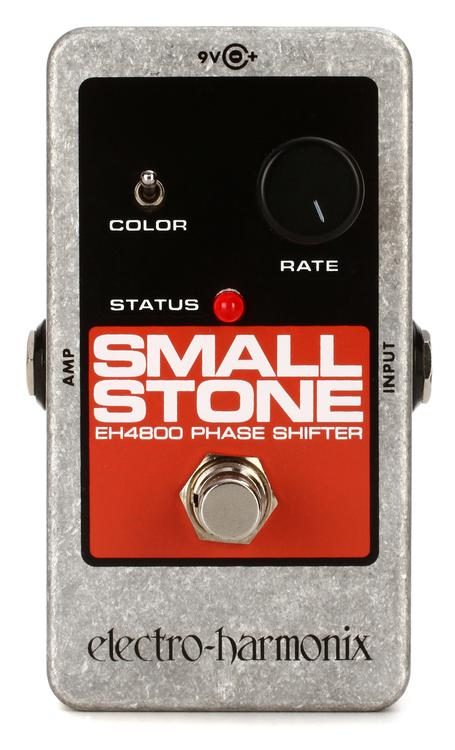
Brand New: $80
Used: $40 - $55
Here is another really simple to use phaser pedal that sounds great, has a slight versatility edge over the MXR Phase 90, and comes in a small and compact chassis. The EHX (Electro-Harmonix) Small Stone was one of the original pedals that EHX first built in the 70s before they were forced to shut their doors in 1984. When EHX finally reopened for business, the Small Stone was once again up for sale, which eventually led to the Nano version of the Small Stone. The Nano version of the Small Stone is what we will be covering here.
The low price point and simplicity of this pedal is really what allows this pedal to be one of the most popular phaser pedals on the market. Similar to the MXR Phase 90, the Small Stone Nano only has one adjustable knob labeled Rate. This knob works in the same manner as the Speed knob on the MXR Phase 90. However, the Small Stone Nano also has a two-position switch labeled Color that allows you to change the character of the phase effect. Putting the switch in the down position produces a warmer tone, while leaving it in the up position gives a more hollow and pronounced tone. The pedal accepts both a 9v adapter and battery, so you have options on how you’d like to power your pedal.
One of the major benefits of this pedal is its size, and coming in at about 2" in height, 2.25" wide, and 4.25" long, it’s easy to justify placing this unit on your pedalboard as it doesn’t take up too much space. And although the unit is small, it is housed in a tough die-cast chassis that can take a serious beating.
Notable artists that use this pedal include Jonny Greenwood and Thom Yorke of Radiohead.
Find out more here
Learn with LPM
If you are looking to feel comfortable with playing basic major and minor chords, power chords, and apply different strumming techniques to your practices with Ze, check out his course called Rhythm Guitar
3. Red Witch Deluxe Moon Phaser
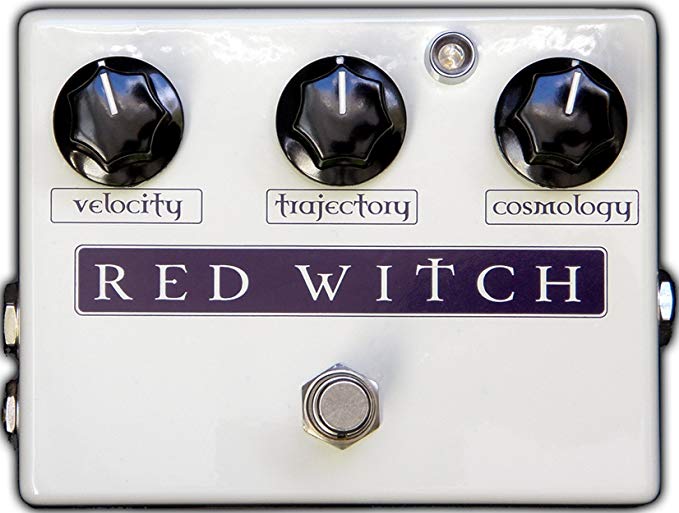
Brand New: $230
Used: $105 - $140
The Red Witch Deluxe Moon Phaser begins to creep into slightly more complex phaser territory. While the previous two phaser pedals mentioned only have one knob each, the Moon Phaser has three knobs that are labeled Velocity, Trajectory, and Cosmology. Those aren’t your typical phaser parameter names, so it can be a little confusing when you first encounter these knobs. Thankfully, they are rather easy to understand.
Velocity controls the speed of the phase, similar to the Rate and Speed knobs on the Small Stone Nano and Phase 90. Trajectory allows you to adjust the depth and shape of the phase, resulting in the ability to adjust how pronounced the phase effect is. Finally, Cosmology is actually a six-way mode switch that allows you to choose between four phasers, one tremolo, and one tremophase (combination of phaser and tremolo). As you can tell, this phaser pedal is essentially a two-in-one pedal that allows you to use it as a tremolo effect too.
While this pedal is definitely more expensive than the previous two, whether it’s worth the higher price point depends on whether you find the additional functions to be useful. On top of being an analog phaser pedal with an additional tremolo function, this pedal also has stereo outputs, true bypass, and a 9v battery or adapter power supply. If you’re looking for something a little more unique that has added functions, then I’d say it’s worth the extra cost, but if you’re just looking for a simple phaser pedal, then you’ll probably want to stick to the previous two models.
Find out more here
4. Chase Bliss Audio Wombtone MKII
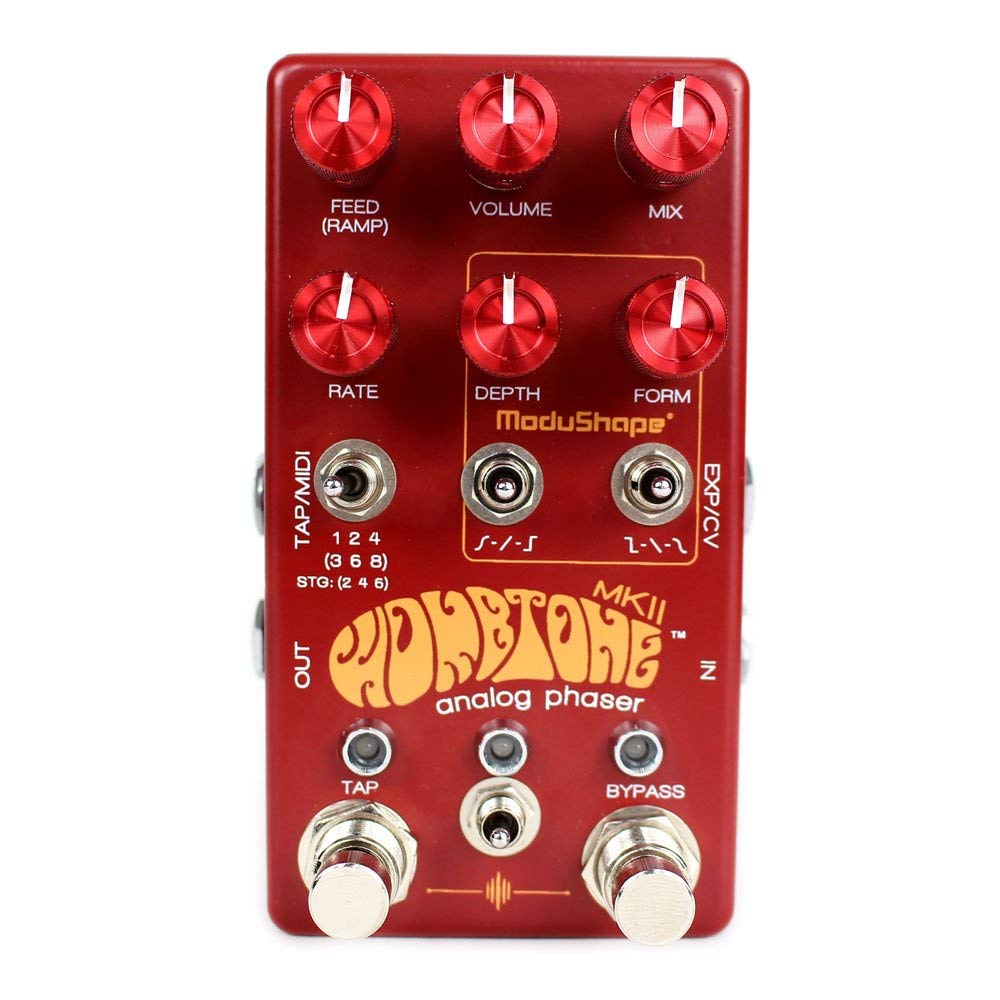
Brand New: $349
Used: $255 - $280
If you consider the best phaser pedal to be the one that is the most versatile and has the ability to do almost anything imaginable in the realm of phasing, then the Chase Bliss Audio Wombtone MKII will likely be considered be the best phaser pedal in your eyes. And judging by the price tag, it better be!
Be warned though, if you’re looking for a phaser that’s a set-it-and-forget-it type of pedal, then look elsewhere. However, if you love to spend weeks-or-months tweaking and playing around with sounds, then you will love this phaser!
It’s impossible to dive into all the switches and knobs without writing another 7000 words, so I’ll just briefly explain how this pedal functions and what the main knobs do. First of all, this pedal is an analog pedal with a digital chip inside that sculpts the sound of the phaser. However, your guitar’s signal always stays within the analog circuit, resulting in a rich and warm analog tone. On the back of the pedal, there are 16 dip switches that can change how the knobs and footswitches function, and they also can be used to effect the overall sound of the phaser. The Feed knob on the front of the pedal controls the amount of feedback in the effect, the Volume knob controls the overall output volume, the Mix knob controls how much of the phaser effect is heard in the output signal, and the Rate knob adjusts the speed of the effect. The section labeled ModuShape allows you to further customize the tone of your phaser by changing the shape of the waveform. There is also a switch that allows you to select the number of stages (all-pass filters) within the phaser effect.
Additionally, a MIDI input is provided that allows you to save presets, a tap tempo pedal can be connected to sync up the phase effect with your band, and an expression pedal can also be connected to control some of the parameters with your foot. Again, I’m really just scratching the surface here with this pedal. This little guy can do a lot more things, and the best part of it all is that it comes housed in a relatively compact size, and it uses a standard 9v battery or power adapter. If you’re looking for an end-all-be-all phaser, this is the one to get!
Buy here
Final Note
And that’s all for this list! Feel free to check out our other lists of guitar pedals if you’re interested, and if you feel like there should be a pedal included in this list, please let us know in the comments!
About the Author: Ze
Ze first began his journey playing original music and top 40s pop tunes around the country's popular venues. Eventually, through the music of John Mayer, he found a strong attraction to blues music. Ze has years of experience teaching beginners and intermediate guitarists. Currently with Liberty Park Music he is teaching Introduction to Guitar Playing for Complete Beginners, Rhythm Guitar to learn about strumming, chords and more, Guitar Essentials as a fast-track review course, and lots of Song Lessons on pop and rock hits.

